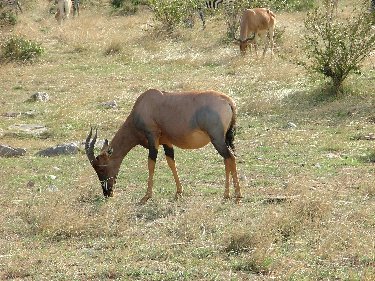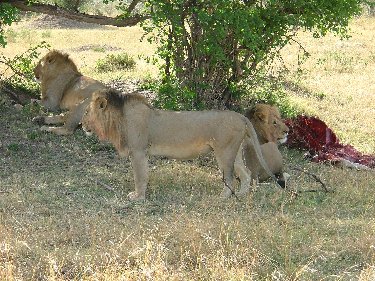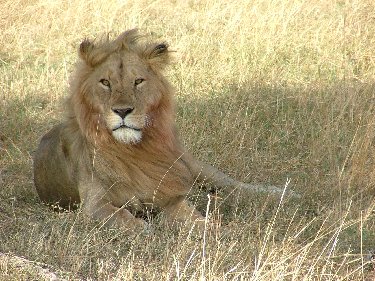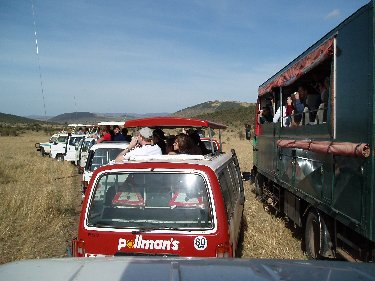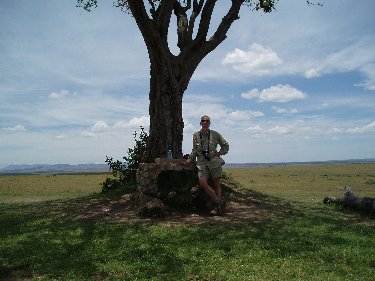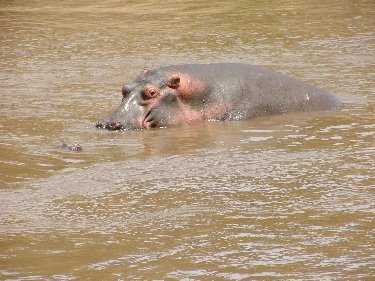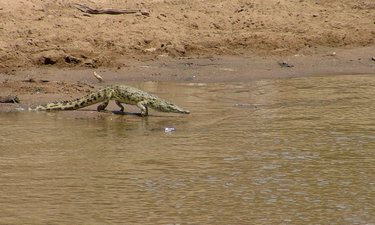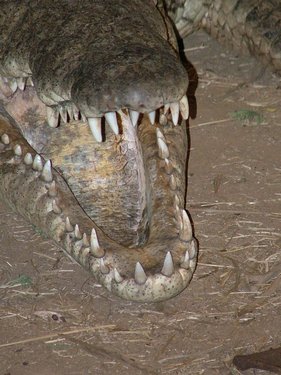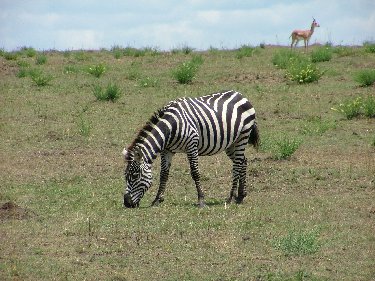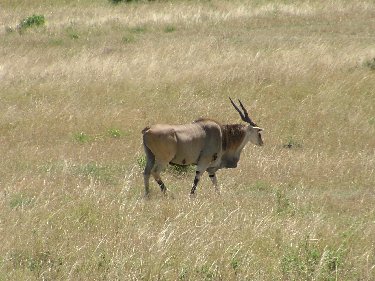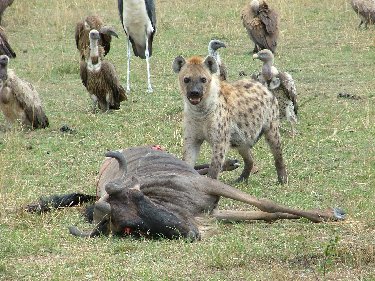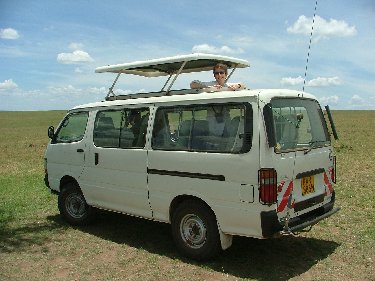|
|
WhereAreJanetandRick Kenya Safari |
|
Masi Mara National Reserve
Topi
The Masi Mara in Kenya and the Serngeti in Tanzania are one continuous park. During the dry season in Tanzania, the most populous wildebeest migrate north to the Masi Mara and in September and October, in anticipation of the light rains, migrate back. There are so many wildebeest, that during the mating season 9000 are born every day!!
The topi pictured here, with the impala in the background, is a medium size antelope. Their distinguishing features are dark patches on their hind legs, front legs and face. They live in herds, usually with other grazers, and are often observed on high vantage points, such as termite mounds, cheking out the surroundings.
Cheetah
This is the fastest animal in the world. Often mistaken for leopards, cheetahs have a relatively small head and dark 'tear tracks' from their eyes to mouth.
Litters may be as large as 9, but most cubs are killed by other predators. The surviving young leave their mothers at around 18 months. The females are solitary for life (except when mating) and males form groups. Pictured here is a mother and cub - there were 2 other camera shy cubs.
Lions
We saw many more lions in the Mara than we did in all of the other parks. This group of males had recently killed an antelope. Although there are only 3 lions pictured, there were 8 in the group. They had finished chowing down by the time that we got there.
Resting
Here's the look of satisfaction after a good meal.
Audience
Imagine an audience at your dinner table:-(
Such a crowd was quite unusual at most sightings. We spent one whole day on the Masi Mara and barely saw another safari vehicle an hour. Occasionally, when word of something special got out, a crowd like that pictured materialized.
Wildebeest migration
Heading back to Tanzania, in anticipation of greener pastures after the rains. There were wildebeest as far as the eye could see, walking sort of in single file. In smaller numbers were zebra and assorted antelopes.
Hawks
These probably red-throated something or other found a piece of food that they had trouble eating. They didn't look very hawk-like during this attempted eating episode.
Humans eating
This was our lunch spot. We pulled over under this beautiful acacia tree to eat the box lunch provided by the lodge. There was not a sound except for the wind blowing the grass around.
During lunch we spotted a solitary wart hog in the distance. It was trotting across the plain, stopping preiodically to look around, usually making a minor course correction after each stop. It reminded Rick of the Motisa tribe (3 foot high Pygmies that ran through the 4 foot high grasslands offering 'More tea, sir? More tea, sir?'
Armed Ranger
As this is a wildlife park, walking around is serious business. We went to a hippo pool not accessible by vehicle so were accompanied by an armed ranger, in case we ran into some hungry wildlife (Janet wasn't really going to the toilet).
The ranger told us that he'd been doing this job for a few years and had never used his weapon.
Hippo Calf
This younsgter was napping next to his mother. Actually, most of the hippos were napping (being nocturnal animals).
Frisky hippos
These guys had something else on their minds! Hippos hump in the water. The male gets on top and the whole process takes about 1/2 hour, the female occasionally coming up for air - you can just make out her eyes in the picture.
While Rick was off trying to get a picture of a hippo yawning for Nancy, the ranger politely informed Janet that the 2 hippos pictured here were f*@#!*^. Janet believes that he was trying to get a reaction out of her while Rick believes that some Smart Alec tourist corrected the Swahili-speaking ranger's English by advising that they weren't mating but f*@#!*^ - I guess we'll never know.
Crockodile
Otherwise known as Crockostimpy (for the Ren & Stimpy fans), a few of these shared the beach with the hippos. This little guy was going in for a dip.
Crockodiles lay many eggs of which only a few survive. Most are eaten by crockodile males!
Say AWWWW!
What a set of teeth!
Border between Kenya and Tanzania
This border between these 2 great countries is marked by this curios statue that happens to look remarkably like Rick. Masi people are free to pass without clearing Customs and Immigration, as are migrating animal.
The border marker points to Mount Kilimanjaro in the east and Lake Victoria in the west.
Common zebra
These are found in virtually all of the parks that we visited during this trip. They differ from the Grevy's zebra, described in the Samburu chapter, in that the Common zebra's stripes wrap its belly and Common zebra's mane is shorter than its Grevy cousin's.
Eland
This is Africa's largest antelope. Their horns grow to about 65 cm, are spiral at the base and sweep straight back. They prefer savanna scrub and 1 male usually lives with 5-10 females.
Female Ostrich
Ostriches usually hang around in family units, although they often graze miles apart. You can spot them in the distance because their significant bodies are raised above the grass by their stilt-like legs. They also travel quite quickly - kind of, but not exactly, like Bugs Bunny's Road Runner!
Male ostrich
This guys is more easily spotted than his mate because his black body contrasts more with the gold savanna. Rick tried catching one, but the ostrich was much faster.
Spotted Hyena
We've described these in the Ngorongoro Crater chapter of the Tanzanias Northern Safari Circuit journal.
Pictured here is 1 of 2 hyenas that were sharing a wildebeest kill. This one was dining while the othe was chasing away the vultures that were awaiting their turn.
End of our safari
We say farewell to our Kenya safari and head into Nairobi. Tonight, we dine on some of the animals that saw on safari at the famous Carnivore Restaurant (rated one of the world's 50 best!!) Bon appetit!
|
